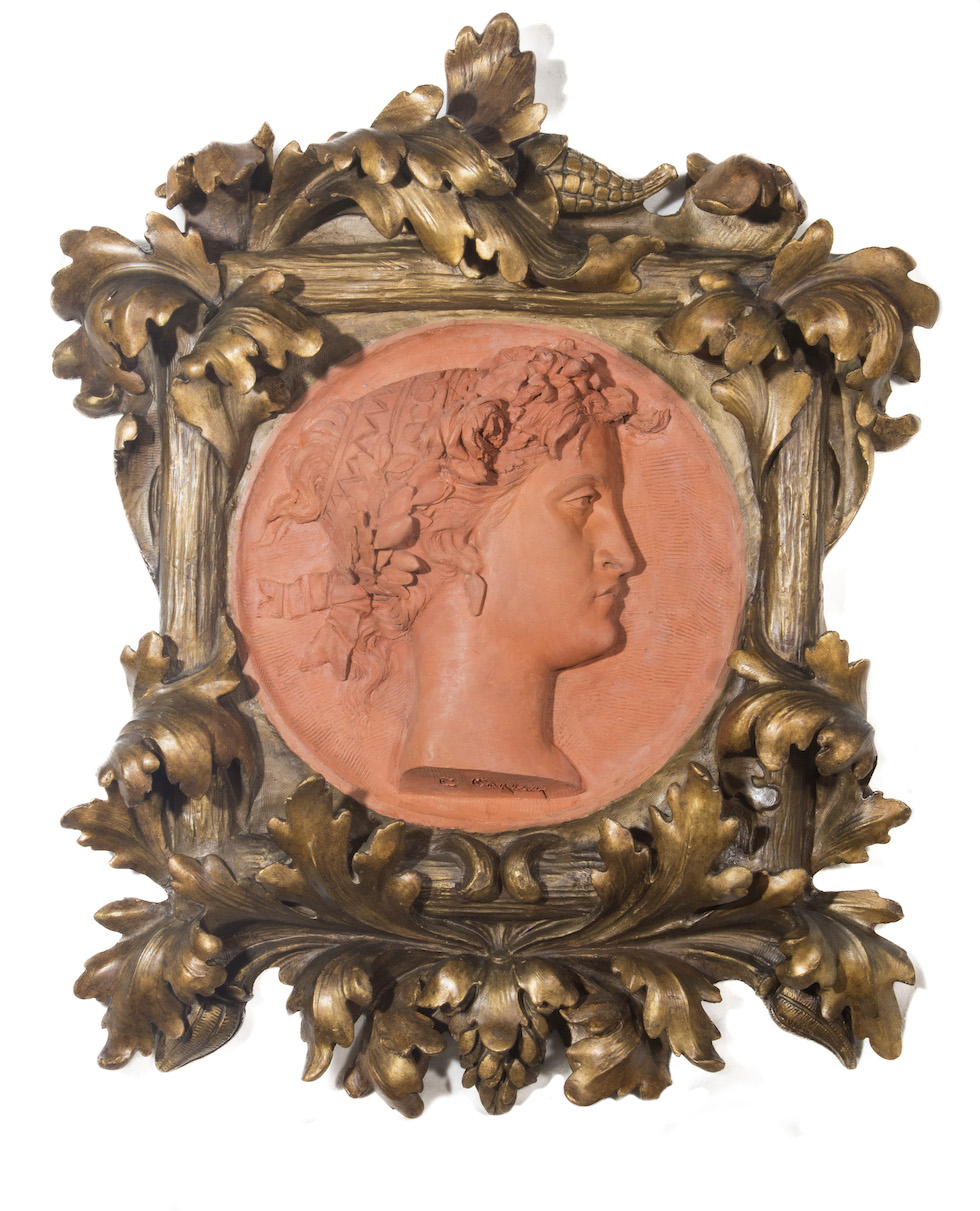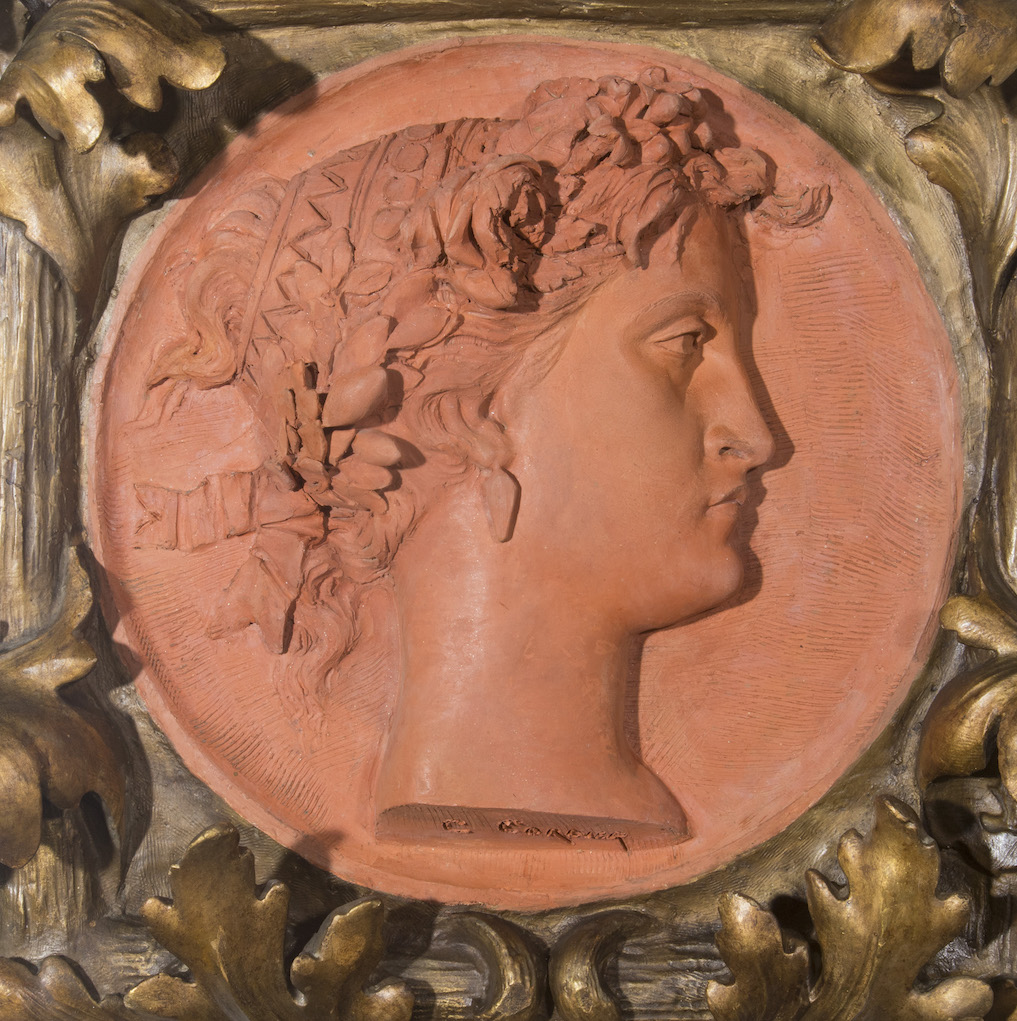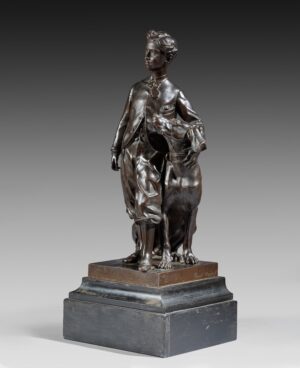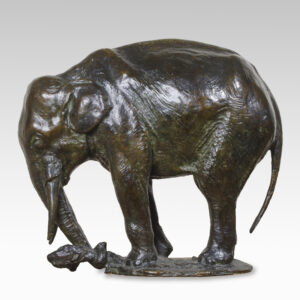Description
In addition to the ethnographic sculptures for which he is renowned, Cordier produced numerous medallions throughout his career, such as M.B. (bronze medallion, no. 3271) and Mme B. (bronze medallion, no. 3273) at the 1850 Salon as well as, on his mission to Italy and Greece of 1858-1859: Femme de l’Acarmanie, Femme grecque, un Palikare grec, etc. As Théophile Gautier wrote in the Moniteur Universel of January 13, 1865, about M. Cordier, “There is no less variety in the medallions, which reproduce with extreme charm various samples of exotic female beauty, including a type of woman from the Morvan, [….] All these medallions are curiously framed in carved oak borders; for M. Cordier is a careful artist, who leaves no detail to chance.”
So it is hardly surprising to have recently rediscovered this imposing terracotta medallion in its original polychrome frame, surmounted across its full width by an ear of corn. It depicts the head of a young woman crowned with flowers, her natural hair escaping from the top of her headdress. Stylistically very similar to two other medallions already known to exist in a private collection (New York), it may complement a cycle representing the Four Seasons; this is only a possibility, as the iconography of the two medallions in question is hypothetical, one representing Flora and the other Zephyr. If these were the Four Seasons, our medallion might represent Summer/Ceres, the second Spring/Flora, the third Autumn/Bacchus, and a fourth would be missing, an old man for Winter. As Laure de Margerie points out, it is difficult to associate the Zephyr medallion with Autumn/Bacchus, as the latter has a wing on his head and is identified as Zephyr. Nevertheless, we can imagine that these three medallions formed a decorative ensemble that remains incomplete and unidentified to this day. Our original terracotta is a new discovery in the sculptor’s oeuvre. According to the catalogue raisonné, the two known medallions date from Cordier’s Nice period and could be dated, without certainty, to around 1877-1890. Leaving Paris at the end of the Second Empire, Cordier first settled in Nice, then, from 1890 onwards, in Algiers, where he ended his life.







